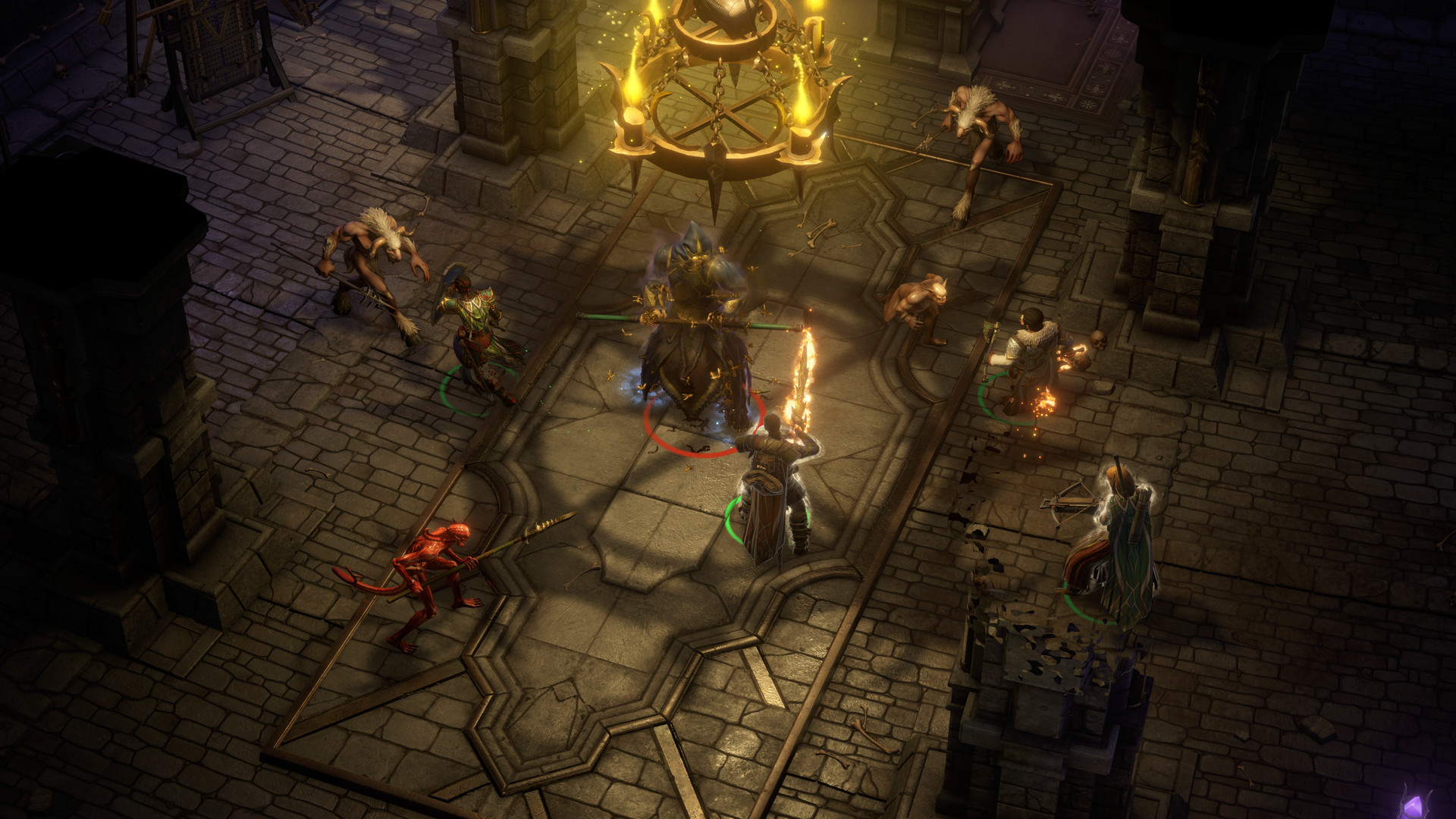Tabletop RPGs are all the rage these days so it’s no surprise that the big boys are hopping on the trend and releasing their own video games with their esteemed brands stamped on. Dungeons & Dragons have been doing it for longer than many of us have been alive and I’ve put plenty of time into some of the other titles out there like Vampire: The Masquerade. It was only a matter of time before Pathfinder jumped into the mix and it made quite a splash with Kingmaker, to say the least.
Following the success of the first release, Pathfinder: Wrath of the Righteous has arrived with a host of significant improvements. Though it follows in Kingmaker’s legacy by having a number of troubling bugs on release, a new class lineup alone is likely to be worth it to the Pathfinder fans while it continues to get hammered into shape with regular updates.
Demons & Dragons
Surprise, surprise, Wrath of the Righteous opens up with us having a serious case of amnesia. I’m sure that any RPG fan has absolutely never heard of a protagonist who can’t remember anything before the start of the game, but here we are. Though you’re waking up at a city-sized festival, you’re not in for a good time. A demon lord springs into action with a massive army of demonic beings and causes some serious problems, not the least of which is the city’s legendary dragon protector being swiftly cut out of the picture.
A city-wide panic erupts and the city falls into the hands of these demonic forces that have continued to pour out of the rift in the earth known as the Worldwound. All that stands in their way is a ragtag batch of heroes led by you. Slowly but surely, this band of heroes retaliates against the forces of evil and kicks off a new crusade to reclaim the land and take the fight to the hellspawn on their own turf.
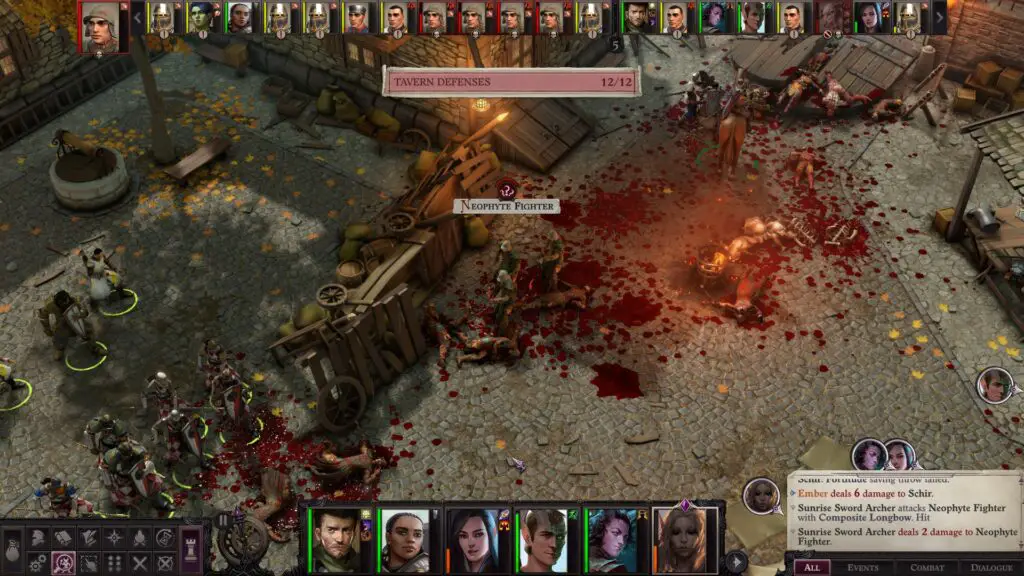
Spoiled for Choice
Pathfinder: Wrath of the Righteous may have the most robust selection of classes that I’ve seen in a cRPG yet. All of the typical classes show their faces here and each primary class has several subtypes to add variety and widen the choices that you have available to you. I’m not particularly well-versed on Pathfinder itself having never played the tabletop version and only dabbling in Kingmaker, so I was quite pleased with the overwhelming box of toys I found myself diving into. I must have spent at least my first hour with the title looking over the many potential directions that I could take my hero.
After I finished with my significant menu hopping, I settled on trying out the new cavalier class. This would prove to be both a gift and a curse to me as we’ll discuss, but it was exciting to customize my mighty steed and specialize him with his own class as well. I decided to double-down and focus on an absolutely brutal mounted charge and put some of my levels into two-handed fighter with a focus on using glaives as well.
As I had hoped, the resulting charge was monstrous and started almost every battle off with an enemy seriously mauled. I was the ultimate wrecking ball and when the game’s pathfinding was working correctly, I had a blast. When it wasn’t, I would end up somewhere far from the battle with the rest of my party exposed as I shook my head in frustration.
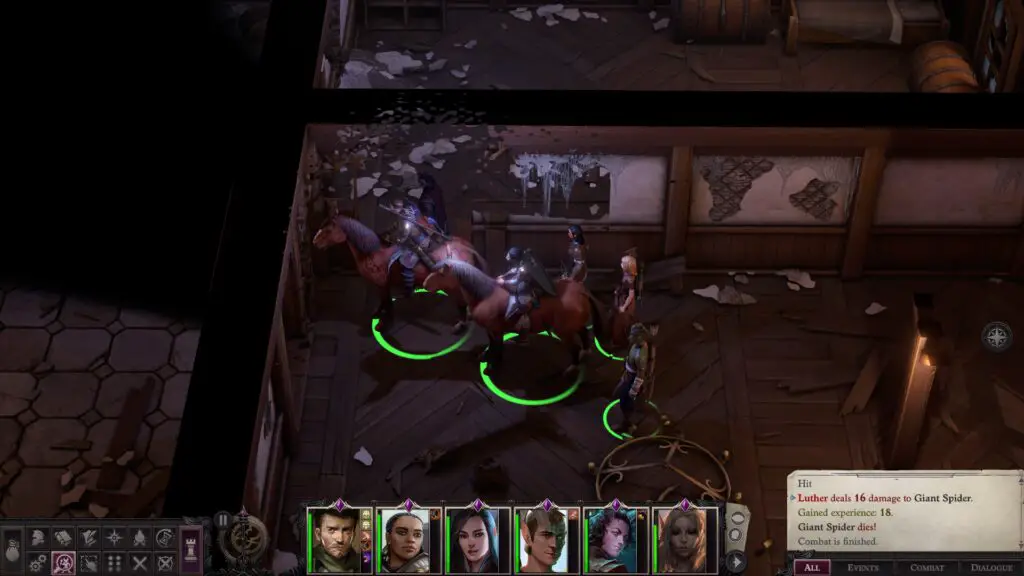
You Have My Axe!
Equipment comes in the reasonable variety that you would expect from a tabletop RPG. Swords, axes, bows, and so on are all here and each has several types that offer varying strengths and weaknesses. I may have been tearing it up with my two-handed glaive, but I never took Seelah the Paladin’s shield for granted either.
A balanced party is a versatile party and there’s plenty of gear to go around. Both equipping and leveling your characters is a fun experience for those who enjoy doing so, though you only have to go so deep into fine-tuning them as if you’re looking to just play the game itself there are options for having the AI take on these choices for you.
Magic is even more varied than equipment and is suitably overwhelming to the fledgling Pathfinder player. With a billion spells ranging from always useful to ‘niche but fantastic when you use it’ to ‘why would I ever use this over something else?’ there’s plenty to keep you occupied. It only adds to your spellcasters’ versatility that their spellbooks can be built and modified in a variety of ways. Do you like your magic missile spell? Why not take a bunch of feats to supercharge its usage?
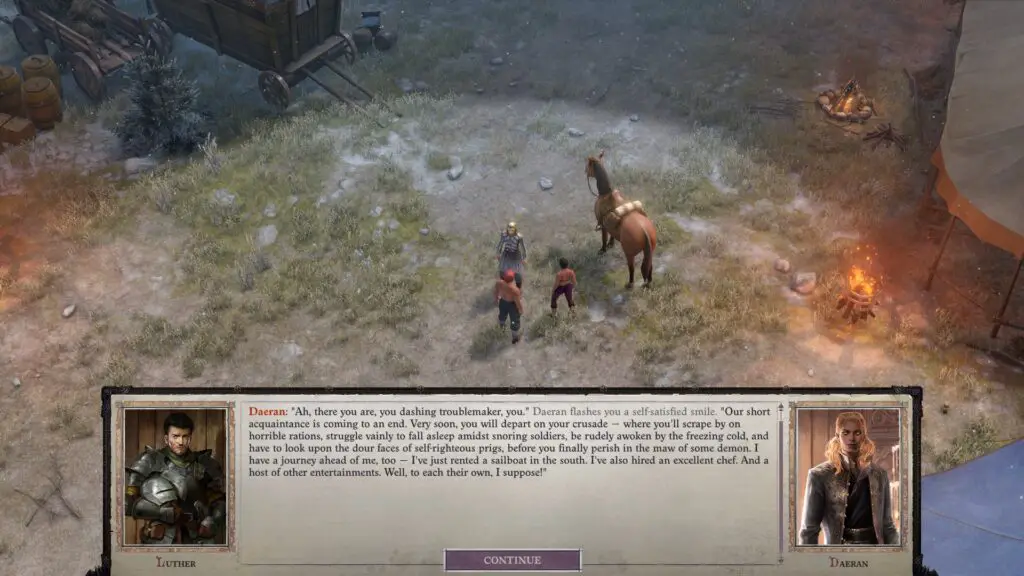
Man or Myth?
Perhaps the most unique feature of Pathfinder: Wrath of the Righteous is the Mythic Paths. These are additional leveling mechanics that are improved and enhanced via narrative events and your choices as opposed to gaining experience. I stuck with the devoted lawful-good warrior fighting against the forces of darkness theme and embraced the path of the angel, though there’s a surprising variety to choose from.
I’m currently considering the path of lichdom if I do another playthrough, though each of the paths is interesting and changes up the game both inside and outside of battle noticeably. I was quite pleased with this system and it received two thumbs up from me as its effects spread out to affect your party members as well.
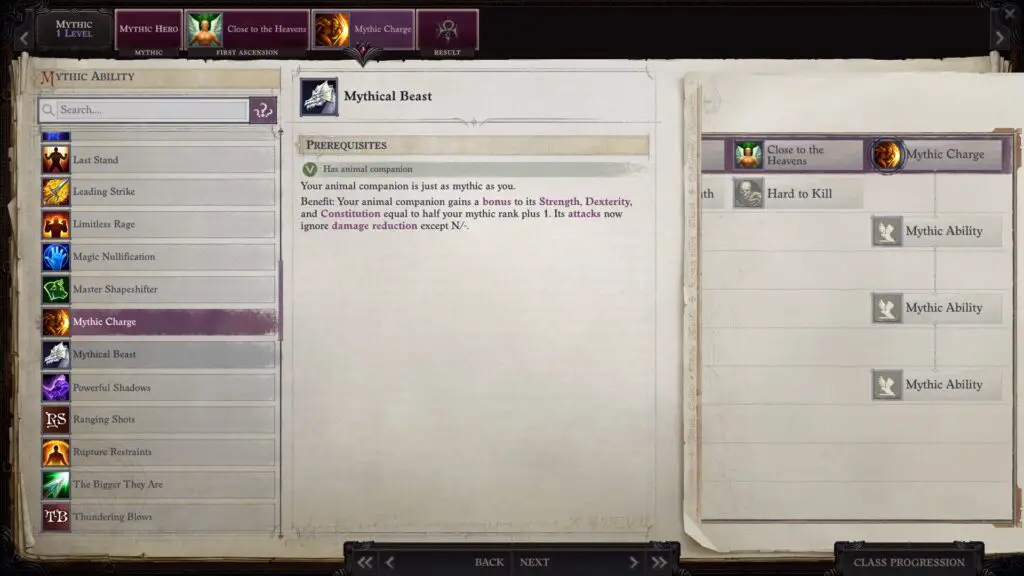
My Kingdom for a (Bug-Free) Horse
Pathfinder: Wrath of the Righteous isn’t without its flaws. As a cavalier, the most game-ruining one for me was the absolutely atrocious pathfinding that mounts have at times during the turn-based mode. Several challenging battles were made far more complicated when I gave the order for an attack and my mount decided to take a stroll to any old place instead of where I had clicked.
At times it was even glitching in the same spot and draining all of my action points, which was the better option when at other times it would take me in the opposite direction of the fight and force me to use my next turn to just get back to where I had been. Nullified alpha strikes and wasted turns don’t tend to make a particularly thrilling experience.
Alternatively, outside of the bugs, the alignment system is another gripe of mine. Alignment defines the general motivations and personality of a character, though its implementation here is quite restricting as dialogue options often revolve around it in extreme ways. Subtlety is not an option at times and if you’re looking to maintain a certain alignment without being the most wildly ambitious form of it, you’re likely to wrestle with it at times. I would have preferred a reputation system of some kind instead, though at least it’s not so intrusive that it will truly interfere with the overall entertainment value of the experience.
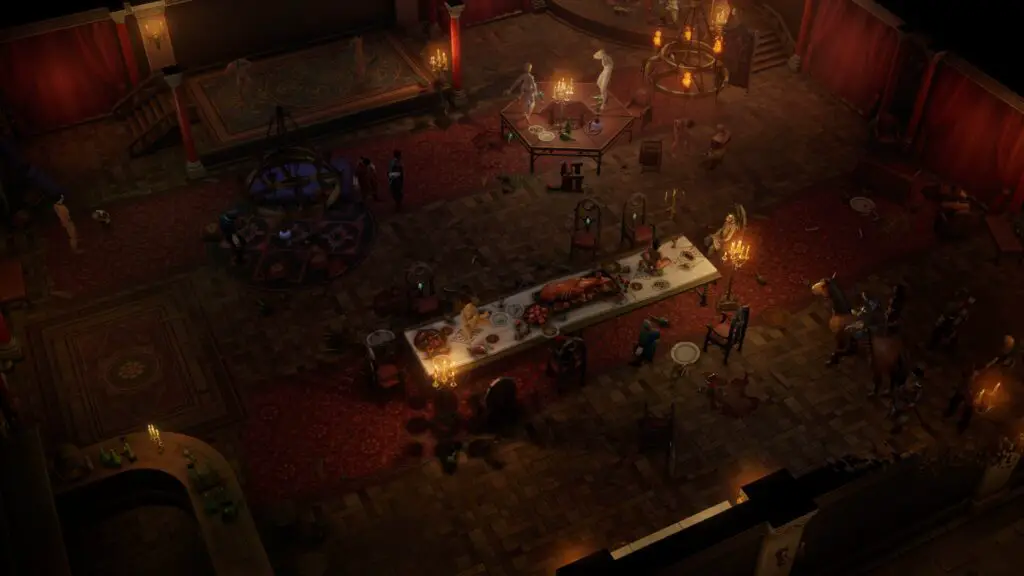
Who Needs the Pope?
Have you missed Heroes of Might & Magic? Well if you have, I’ve got some good news. The crusade in Wrath of the Righteous plays almost exactly like it. Once you reach the point where you’ve officially been crowned the leader of the crusade, you’ll be recruiting troops and commanders to fight against the demonic armies to cleanse the world of their presence.
These large-scale battles involve grids, large numbers of units represented by a singular entity on said grid, with a unique ability or two each, and leaders who impact the battle both actively and passively. These armies march around on the same world map as your party and are integral to your progression as there are often demonic forces blocking your path that require an army to exterminate. No, you can’t try to Lord of the Rings fellowship your way through them with your heroes either, this is strictly the domain of your military forces.
The crusade mechanics overall are both a welcome addition and a little undercooked. The variety of units and leaders spices things up with interesting combinations and abilities though battles play out like a straight rip from other titles, other titles that have a focus on such battles so they have more pull. There aren’t any big surprises and if you’re experienced in the genre you’ll immediately know what to do without much that will catch you off guard. Whether this is a good or bad implementation is likely to vary from player to player, though it certainly feels like a tacked-on novelty as opposed to a system that received a lot of thought.
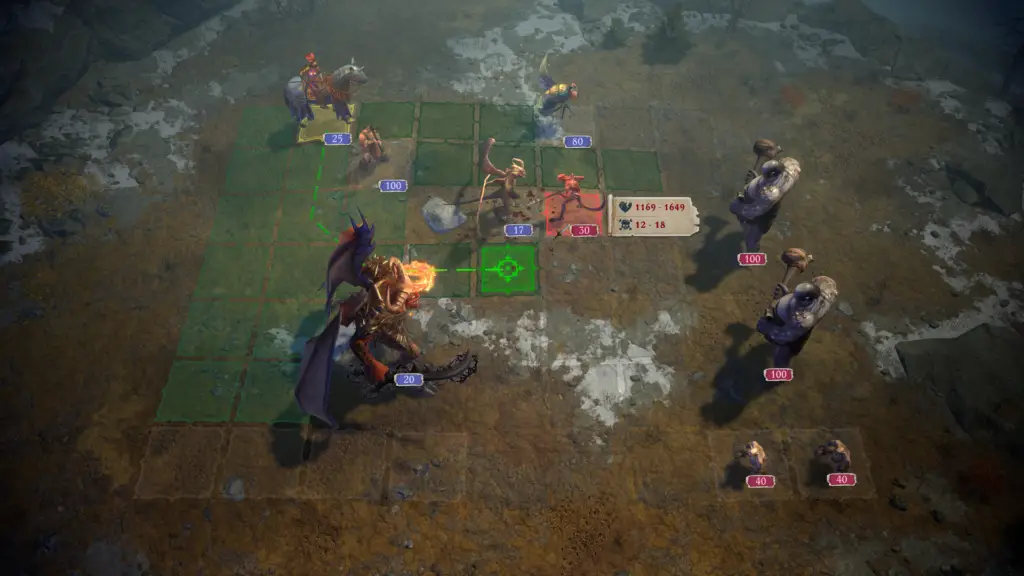
The Bottom Line
Pathfinder: Wrath of the Righteous is a solid RPG, there’s no question about that. The gameplay is entertaining, character progression is exciting and fun to mess around with, and the story is likely to keep you engaged even if it isn’t as likely to stick with you for long after you’ve played through it. My concerns were mostly regarding bugs that seem to be getting stomped out at a relatively decent pace which bodes well for future playthroughs even if there were some serious growing pains involving them after release. Overall, this is a table-top-inspired RPG that you won’t want to miss if it’s already your jam though it’s unlikely to convert new fans to the genre on its own.


